McMenamins Edgefield in Troutdale, Oregon is a former poor farm turned restaurant/hotel/brewery/winery/theater/golf course. Heck, they even have a glass-blowing studio.
Of course, my favorite attraction is the incredible landscaping! Here are a dozen interesting and unusual plants I saw there this year while exploring the grounds (in chronological order, more or less).
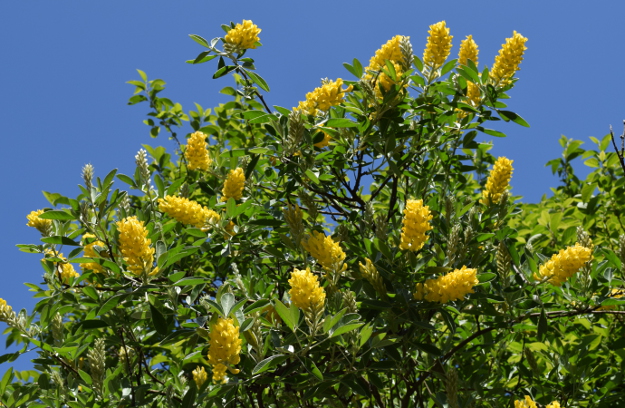
Pretty sure I killed this as a houseplant once. Pineapple broom (Cytisus battandieri, a.k.a. Argyrocytisus battandieri) is a shrubby tree in the legume family from Morocco with blossoms that are supposed to smell like pineapple. I couldn’t get much scent when I saw this beauty blooming in mid-May, but it was fantastic nonetheless. It likes very poor, dry, sandy soil and full sun. It reaches 10-20 ft. and is hardy to zone 7a.
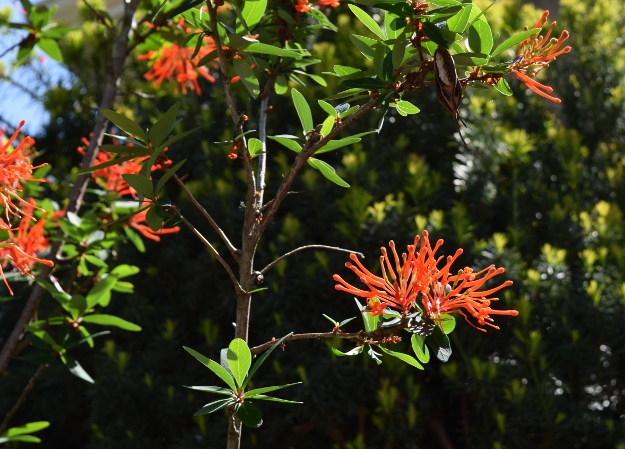
Chilean firebush (Embothrium coccineum) has achieved cult status in these parts, probably due to people like Dan Hinkley who have seen it in its native lands in blazing glory. In an old Heronswood catalog, Dan waxes poetic on one such journey: “[We] walked that day, through thickets of Embothrium, some still glowering red, and we positioned ourselves in perfect alignment with those trees of late blossoms, to watch them explode in delicious, unreal color as the snow of the volcano came in view behind.” This tree at Edgefield was in delicious, unreal bloom in mid-May.

Embothrium is hardy to zone 8a and can be grown here on the West Coast, but it’s persnickety and will fail in most of the rest of the country. Don’t be too envious of us, though—I don’t think we can grow them properly, either. Truth be told, the plants I’ve seen look pretty threadbare, limping along from year to year. This skinny form doesn’t do it for me, either.
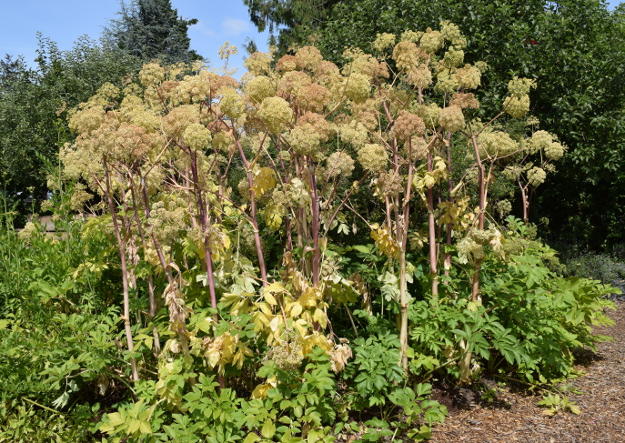
I believe this is lovage (Levisticum officinale). It was growing in the kitchen garden and was imposingly tall, throbbing with the hum of bees, and smelled like celery. If that’s what it is, it’s hardy to zone 4 and prefers loamy soil and full sun, like you would find in the vegetable garden.
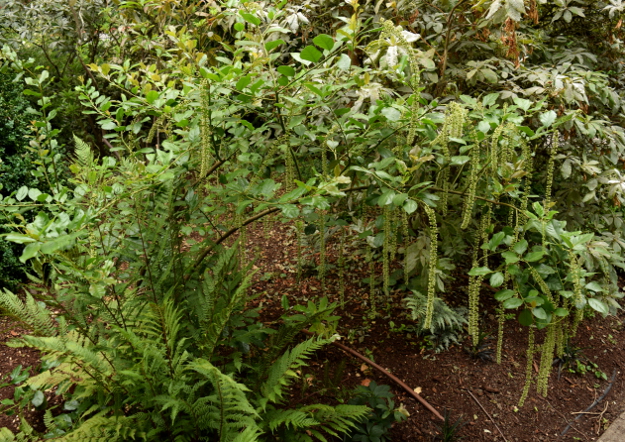
I’d read about hollyleaf sweetspire (Itea ilicifolia) many years ago, but this was the first one I’d ever seen in person, and it was worth the wait. I think it’s really cool. It’s elegant and evergreen, and I must have one—if I can find a shady, sheltered spot for it and can remember to water it in summer. It’s hardy to zone 7a, but doesn’t fare well in cold, blustery winds. Supposedly it can reach 12 ft. high.
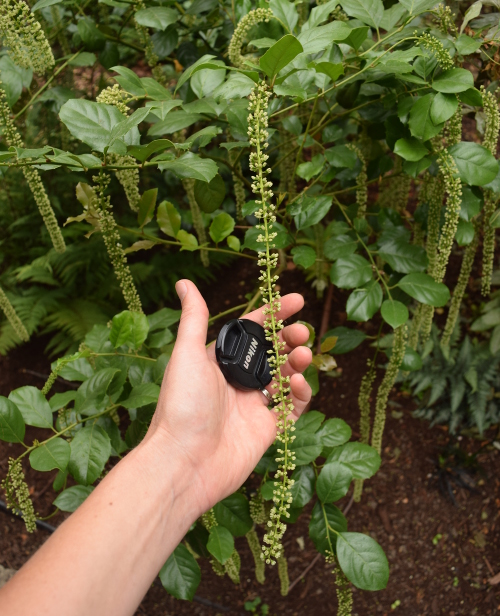
Look the length of those racemes! This was in July. I can’t remember, but I think those are the spent flowers, not the buds. In bloom, hollyleaf sweetspire is even prettier.
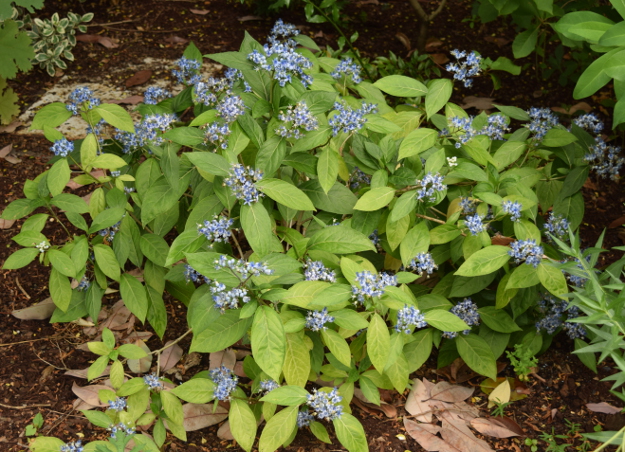
On that same visit on July 11, blue evergreen hydrangea (Dichroa febrifuga) was blooming in a shady spot. This shrub is indeed evergreen, but only in the mildest climates. Hardy to 8a, it may die back to the ground if faced with a string of single-digit nights.

Dichroa is also known as bluebead; here are the namesake fruits in October. A lovely plant for a sheltered woodland setting.
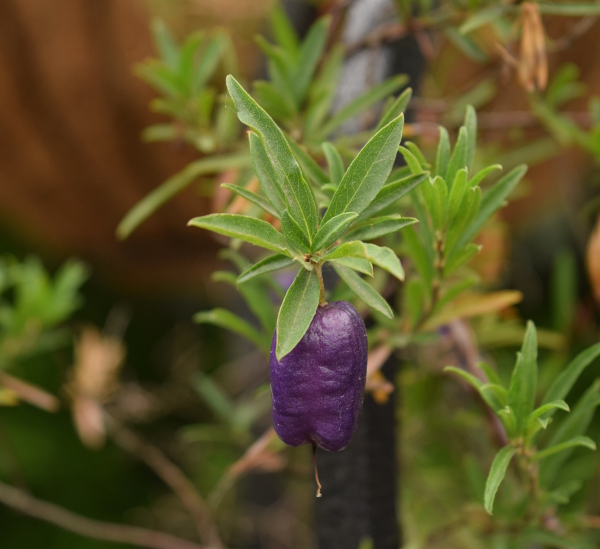
This one was completely new to me. I give you Tasmanian blueberry vine (Billardiera longiflora)! This is the fruit in July—it’s about the size of a cherry. Supposed to be edible, but not particularly tasty. The foliage was sparse; I’m not sure what happened there. It was planted in a container, so maybe it dried out during our crazy-hot summer. Cute fruits! Zone 8a.
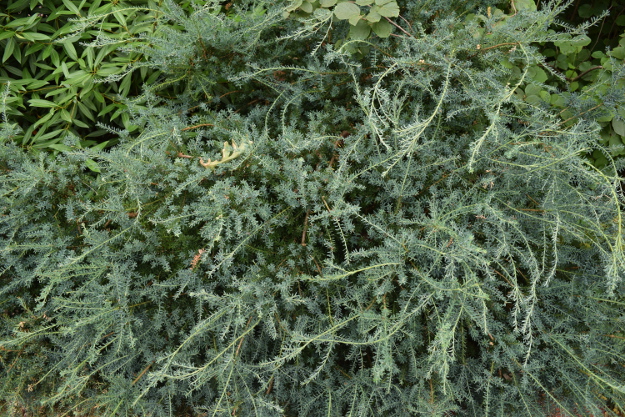
Every time I used to see this plant I would think, ” I have GOT to find out the name of that beautiful blue Taxus!” But of course, it’s not a yew at all. This is Podocarpus lawrencei ‘Blue Gem’. Another Tasmanian, growing 3 ft. × 3 ft. Wonderful soft, dense, evergreen (everblue) foliage for sun or light shade in zone 7a and warmer.

I had no clue what this shrub was, and when I found out what family it was in, I was shocked. Any guesses? This is in a hot, dry western exposure in July.
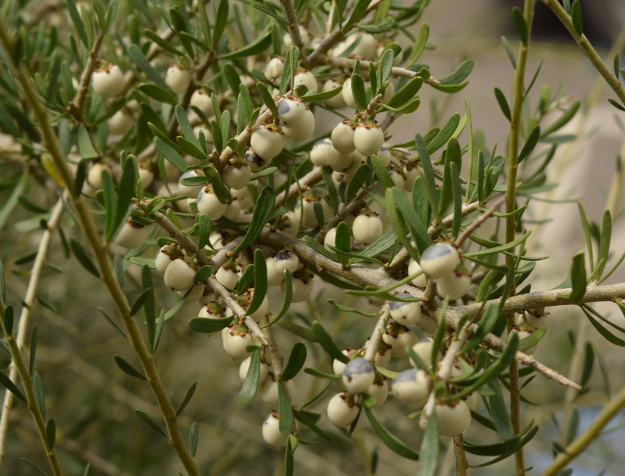
When I went back on August 31, it had these curious fruits—white with a dark gray blotch.
Paul Bonine of Xera Plants identified it for me as porcupine shrub (Hymenanthera alpina or Melicytus alpina) and said it was in the violet family (Violaceae)! He says it reaches 4 ft. × 4 ft. and is hardy to zone 7b.
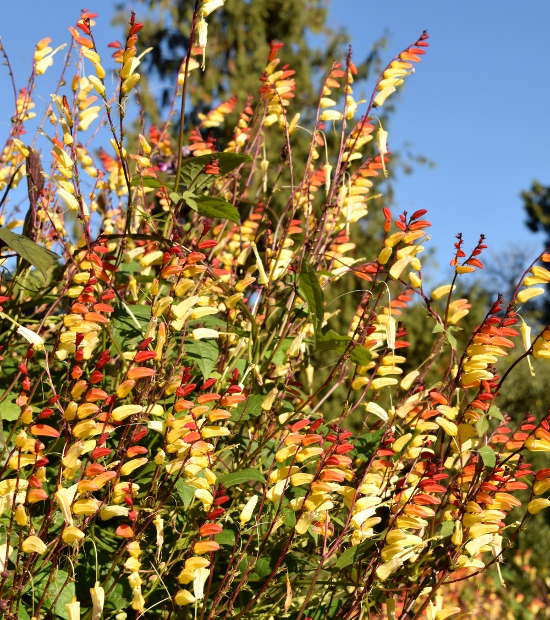
Why have I never grown this? Firecracker vine, a.k.a. Spanish flag (Ipomoea lobata, formerly Mina lobata), is a stunning annual vine that’s related to, but less rampant than, morning glory. At Edgefield it was grown in large pots with purple hyacinth bean (Lablab purpureus) this year and they were smashing together. I took this photo on Sept. 29.
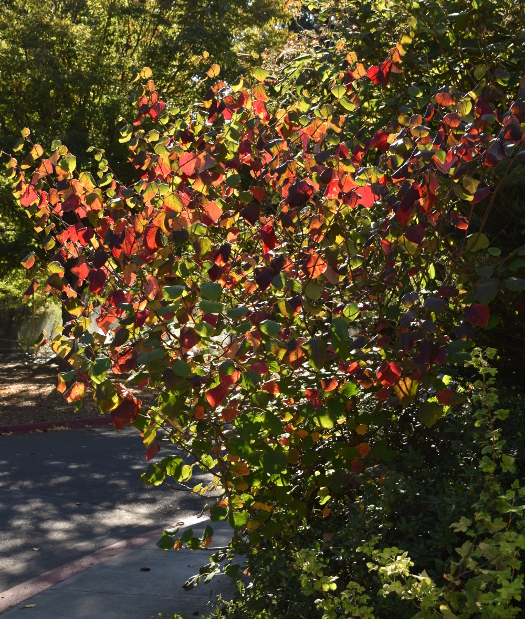
At the end of September I also caught Disanthus cercidifolius beginning its fall fireworks. Like the hollyleaf itea, this was a plant I had seen photos of long ago but didn’t encounter until moving to Portland. It looks just like a redbud but is in the witch hazel family. I missed the full-on fall color; I’ll have to watch it more closely next year. I’ve seen no evidence of the small purple flowers that are supposed to appear in fall. This shrub is hardy to zone 6 and can reach 10 ft.
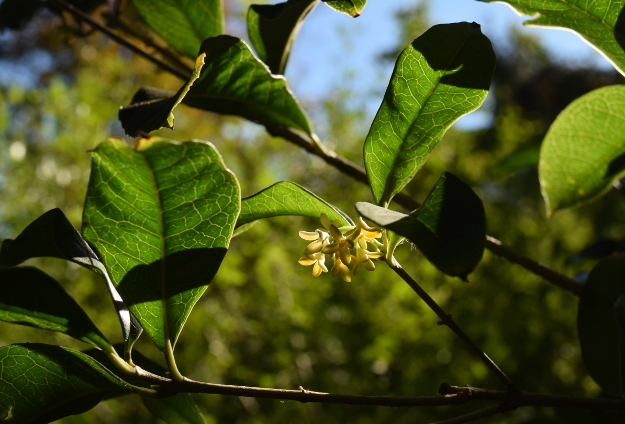
Fragrant tea olive (Osmanthus fragrans) pulled me off the sidewalk at the end of September and into a dark sitting area under a huge tree. The shrub was so shaded that it hardly had any leaves and didn’t look like much, but that scent! Bright and sweet and strong and—I don’t know—lemony? It was divine, and it was still blooming away when I went back today (Oct. 20). Of this plant, Dirr says, “Flowers appear over such a great time frame and are so fragrant that to not try the plant is to cheat one’s garden.” He says fragrant tea olive is hardy to zone 7 and can reach 30 ft. in the mildest areas.

Right across from the tea olive is another multi-stemmed evergreen shrub, but this one has a much prettier flower with a stinky scent. The funk isn’t noticeable until you put your sniffer right into it, though. This is Florida anise tree (Illicium floridanum). It’s hardy to zone 6 and usually grows to about 10 ft. but can get much bigger.
I just attended a talk on color in the garden the other day by garden designer Lucy Hardiman, and she said that pink flowers are the ones most often sniffed by garden visitors. Ha! This one’s a prankster.
Do you know any of these unusual plants or have any experience with them? What can you add to my too-brief descriptions?


There’s a tall, impressive Embothrium in the sunny border at Far Reaches Farm, really stunning in bloom, but hard to photograph. I’ve heard that hummingbirds love that fragrant Osmanthus. When we first moved here, our rental house had two huge ones in the back yard, and that was where I saw my first PNW hummers.
I’ve only seen a few Embothrium around Portland. I’m not sure if I’ve seen any other fragrant Osmanthus, but they look like any other broadleaf evergreen and are pretty inconspicuous.
I’ve never understood the appeal of Embothrium…I’ve never seen a photo where it didn’t look gangly and graceless…but, to each his own, I guess. I may have to find room for some Lovage…so nice! I really like Disanthus and had been considering putting one in our back garden…but even at its small size, I think it might eventually get too large.
It felt a little blasphemous to say I’m not impressed with Embothrium. Thanks for the confirmation! The lovage was cut back to basal foliage when I went back later in the year. I have some seeds if you want to try it. Yes, I wish there was a compact version of Disanthus. Even for big gardens, it’s a space hog.
Hi Amy, at Edgefield there is a plant that grows very tall, possibly 15-20 feet on a single stalk that leaves out only near the top. The leaves look somewhat like an aralia but not glossy. They are deciduous and have large leaves, again like an aralia or maple shape. There are a few in one of the inner courts and other places. Does that ring a bell? Thanks for any help you can give.
Sounds like Tetrapanax papyrifer. Could that be it?
[…] thing so beautiful should be near-impossible to develop. Then, I noticed it in individual on the Edgefield McMenamins in Troutdale, Oregon. It was […]
[…] that something so exquisite must be near-impossible to grow. Then, I saw it in person at the Edgefield McMenamins in Troutdale, Oregon. It was […]